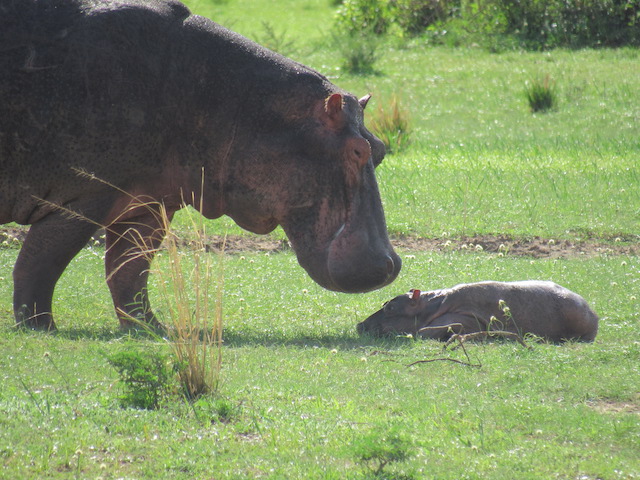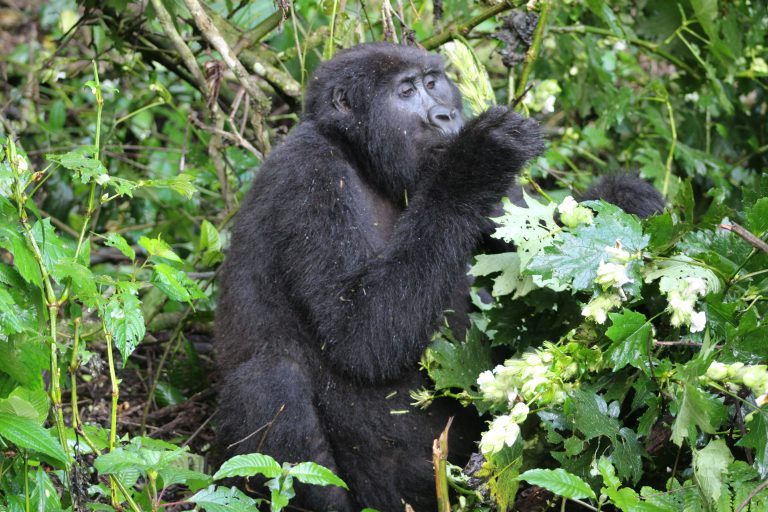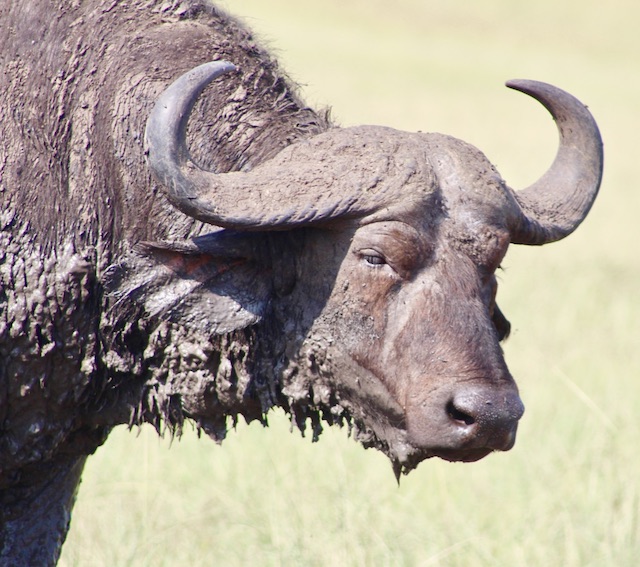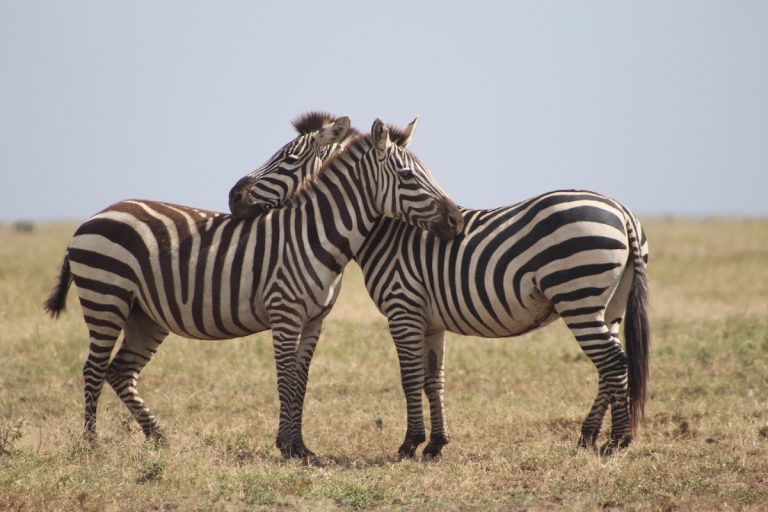 Samburu national reserve is a premier hot and dry distinct and appealing place located in Northern Kenya’s Laikipia. The reserve is located on the banks of the Ewaso Ng’iro River adjoining Buffalo Springs National Park and Shaba National Reserve.
Samburu national reserve is a premier hot and dry distinct and appealing place located in Northern Kenya’s Laikipia. The reserve is located on the banks of the Ewaso Ng’iro River adjoining Buffalo Springs National Park and Shaba National Reserve.
The Ewaso Ng’iro River is the longest in Northern Kenya, it is the water supply in this semi-arid region. The Reserve is about 165 square kilometers and ranges in elevation from 800 to 1230 meters above sea level. Moreover, Samburu National Reserve’s eco-system also includes several conservancies and ranches that border the main reserve, including the Kalama Conservancy, Namunyak Wildlife Conservancy, and West Gate Community Conservancy.
Samburu National Reserve takes its name from the Samburu people, nomadic pastoralists with one of Africa’s most vibrant traditional attires and closely affiliated with the Maasai. The Samburu were drawn to this location by the Ewaso Ng’iro, which provides water for their livestock.
Samburu National Reserve is one of Kenya’s least visited but most rewarding game reserves. The reserve encompasses several natural habitats including palm gloves, riverine forests, savannah, and semi-arid environments that form a spectacular area of distant primeval wilderness. Though small in size, Samburu National Reserve more than makes up for it with fantastic biodiversity. The reserve offers a fascinating Kenya safari with the quantity of gigantic African big cats, wild canines, and large mammals.
Attractions in Samburu National Reserve
The Samburu Special Five
Samburu’s most famous animals are its own Big Five – Grevy’s zebra, with their smart pin-stripe pattern. The Gerenuk, with its impressively stretchy neck, the Beisa oryx, with pointed horns and distinctive markings, the reticulated giraffe which is clad in attractive coats and the Somali ostrich, a feathery delight.
The area is also home to Kamunyak, a lioness noted for adopting oryx calves.
Samburu Wildlife
The reserve thrives with plenty of lions and leopards, as well as elephants which are the reserve’s most dominant species.
More wildlife includes; cheetahs, hyenas, and the occasional wild dogs. The reserve’s savanna supports a diverse range of herbivores such as Grant’s gazelles, Kirk’s dik-dik, warthogs, waterbucks, bushbucks, and olive baboons, etc. On the other hand, the Ewaso Ng’iro river is home to an impressive population of hippopotami and crocodiles.
Birds – Samburu National Reserve
Over 350 bird species have been reported in this magnificent wilderness, including Secretary bird, vulturine guinea fowls, and Superb Starlings. Samburu also boasts of the globally endangered Lesser Kestrel and the Taita Falcon. Other notable bird species in the reserve include the African Darter, Martial Eagle, White-headed Vulture, Great Egret. The Tawny eagle, Superb Sterling, Yellow-necked spurfowl, Lilac-breasted roller, Northern red-billed hornbill. Vultures, Yellow-billed woodpecker are among the others.
Samburu Culture
Samburu (which means butterfly) culture is one of the most exciting African cultures to explore while on a Kenya safari. The Samburu people are a unique tribe who are primarily renowned for their livestock keeping and use camels as their mode of transportation. On a cultural visit to the Samburu community, you can experience a camel ride. The Samburu culture has a distinctive method of dressing up and painting their faces with striking designs to highlight their gorgeous facial characteristics.
River Ewaso Ng’iro
This is one of Kenya’s largest rivers and a vital water source for Samburu’s impressive wildlife. The river features superb riverine forest as it flows north to east across Somalia to meet with the river Jubba. River Ewaso Ng’iro is a haven for a large number of Nile crocodiles, and hippos. It is a great spot for wildlife viewing because a variety of mammals congregate at the river to drink water.
Mount Ololokwe and Mount Koitar
These mountains are located in the center of the reserve, making it more intriguing, and many tiny animals can be observed relaxing there. The mountains offer wonderful views of the reserve and wildlife as well as a memorable topography.
Things to do in Samburu National Reserve
Camel Excursions
Besides being used as a mode of transport by the Samburu, Camel rides in Samburu take travelers on a spectacular exploration of the African wilderness. A camel ride is an excellent alternative to the regular game drive. It allows you to get close with the park’s special five and other variety of wildlife.
Camels are calm animals that have been part of the northern Kenyan way of life for millennia. You can choose between a 2-hour round trip with sundowners in between and a longer camel safari with fly camping in the bush.
Game Drives in Samburu National Reserve
Game drives are best done early in the morning while animals are still active and in the afternoon when they have gathered around water sources and under shades.
More so, the Ewaso Ng’iro River is the greatest spot for safari game drives in the reserve. Game drives in Samburu National Reserve are conducted in the comfort of 4WD safari vehicles and under the close supervision of a game ranger/guide.
Guided Nature Walks
Guided nature walks in Samburu are enjoyed in the region surrounding your camp or in nearby conservancies. The guided nature walk last about 2-5 hours. This is a fantastic opportunity to see some of the 350 bird species documented here and the unique Samburu five among other wild species. More so, you will learn more about the fascinating plant life and its applications in local customs.
Nature walks in Samburu are best done early in the morning or late in the evening when it is not too hot. As a result, a lengthier walking adventure is sometimes paired with a game drive and picnic lunch. Samburu is semi-arid, so bring plenty of water. Wear a good hat, lightweight trousers and long-sleeve tops (to protect your arms and legs from thorny shrubs), sunglasses, and appropriate walking shoes.
Bird-watching in Samburu National Reserve
Samburu National Reserve is home to over 350 recorded species of birds, making it an ideal birding paradise. The reserve’s incredible habitats are home to species such as yellow-necked spurfowl, yellow-billed hornbill, palm-nut vulture. The grey-headed Kingfisher, bee-eaters, Marabou stork, Vulturine Guinea fowl, Secretary bird, Bateleur, sunbirds, lilac-breasted roller, and so on.
Visit Reteti Elephant Sanctuary
Reteti Elephant Sanctuary is one of Kenya’s earliest community-run wildlife organizations, located in the neighboring Namunyak Wildlife Conservancy. The sanctuary and its keepers are dedicated to rescuing, rehabilitating, and rewilding orphaned and abandoned elephant calves and other species. Visitors can see the elephants come in from their stroll to receive their bottles and then have mudhole fun from a unique observation platform.
Visiting hours are from 8.30 a.m. to 10 a.m., and then from 11.30 a.m. to 1 p.m. During your visit, you will be accompanied by a keeper who give you a behind-the-scenes tour of the sanctuary. They prefer that you dress in green if feasible, and reservations for the tour to the sanctuary must be made at least a week in advance.
Cultural Visits
Cultural visits to Samburu National Reserve offer a thrilling journey to the traditional dwellings of the Samburu people. The visits will provide a unique insight into the traditional lifestyle of these desert pastoralists. Their traditions have diverged significantly from those of their Maasai cousins. More enticing is the chance to witness and enter their traditional Manyattas and explore how they live.
When is the best time to visit Samburu National Reserve?
The best time to visit Samburu National Reserve is during the dry season, which runs from July to October and December to February. In these times, the reserve has a high concentration of wildlife, particularly along the Ewaso Ng’iro River. The river is the reserve’s and local villages’ major water source. The reserve, on the other hand, is open to visitors all year.
Getting to Samburu National Reserve
By road, Samburu National Park is only 350 kilometers from Nairobi and so easily accessible by car. The journey to the reserve from Nairobi is about 6 hours drive.
By air, you can a charter flight from Jomo Kenyatta International Airport or Wilson Airport in Nairobi to any of the reserve’s airstrips. There are also scheduled flights to SAMBURU NATIONAL RESERVE. You will be transferred by car from the airstrip to your camp or lodge.
Accommodation in Samburu National Park
Samburu National Reserve offers a wide range of distinctive rewardable safari lodges and campsites which include;
- Sasaab Lodge
- Sarara Camp
- Sasaab Camp
- Sarova Shaba Game Lodge
- Elephants Watch Camp
- Samburu Sopa Lodge





